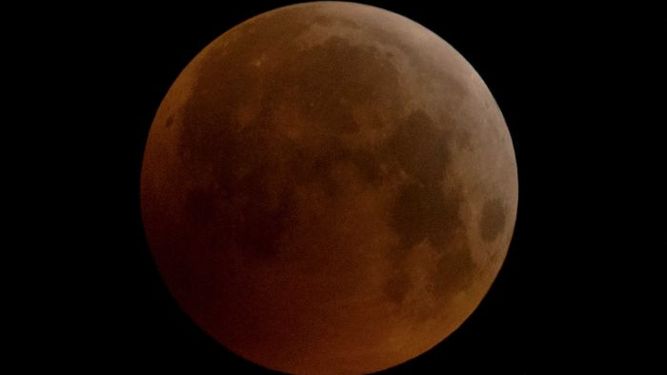Other countries had chance to see rare “Blood Moon” yesterday, next is not until 2021
- By : Panama Now
- Category : Environmental, Weather

A series of unusual celestial circumstances coincided on Sunday night to hide the Moon that then reappeared dressed in a faint red in a total eclipse that captivated observers in the Americas, Europe and Africa.
In Mexico and Los Angeles, from Paris to Uarzazat, the eyes settled on the sky to observe the phenomenon, around midnight for the American continent, shortly before dawn for European and African lands.
The eclipse lasted about three hours: a first hour when the full Moon was gently swallowed by the shadow of the Earth, then an hour of total eclipse and finally an hour when the Moon progressively appeared again full and bright.
The Moon was a “Super Moon”, the term used when the satellite is at a relatively close distance from Earth, about 358 thousand kilometers, so it was larger than normal.
In addition, eastward, Venus and Jupiter shone in the night sky.
During the total phase of the eclipse, the Moon appeared painted in red or pink tones. Americans call this effect “blood moon”.
The last time a total eclipse had been observed from Europe was in July 2018. AP / Claude Paris
That dyeing is due to the fact that during an eclipse the Sun’s rays impact directly on the Moon because the Earth is in the middle.
These solar rays are filtered by the atmosphere: the red rays are diverted towards the interior of the cone of shadow and, therefore, towards the Moon, while the blue rays diverge towards the outside.
In London, fans of astronomy had no luck: clouds blocked the view. But the inhabitants of Villa Nueva, in Guatemala, of Montevideo, Mexico, Miami and Paris had skies open to the spectacle.
Lunar eclipses total or partial occur at least twice a year, says Florent Deleflie, astronomer at the Paris-PSL Observatory, although they are not visible everywhere.
It is rare to be able to fully observe total eclipses. The one on Sunday was the last until May 2021



No Comments